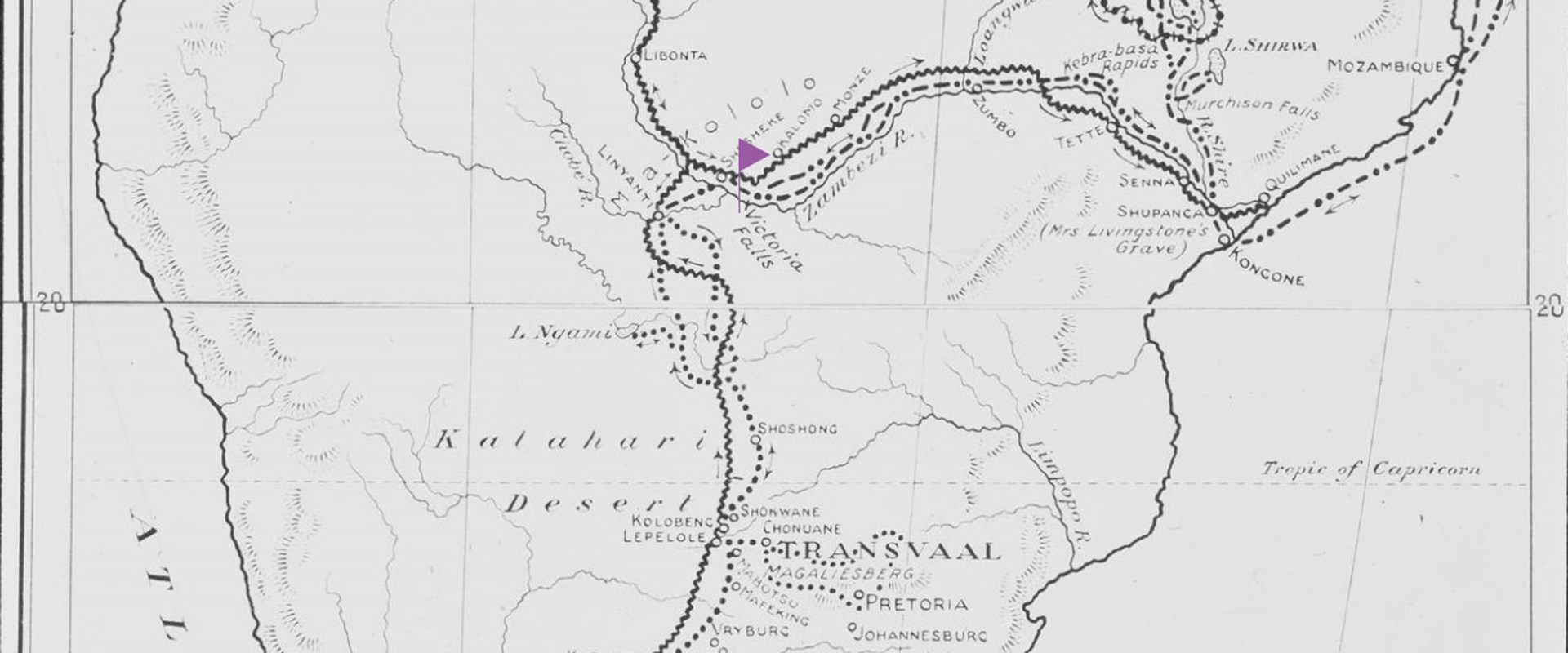Key in a search term below to search our website.
Key in a search term below to search our website.

After collecting supplies in Linyanti, Livingstone continued his journey east following the Zambezi, and in late November 1855 he reached the waterfalls known locally as Mosi-oa-Tunya, which he renamed in honour of Queen Victoria (1819-1901). Being nearly two kilometres wide and with a drop of 108 metres, the falls are an impressive sight; and Livingstone provides an emotive description of them:
"After twenty minutes’ sail from Kalai we came in sight of the columns of vapour, rising at a distance of five or six miles. [...] The whole scene is extremely beautiful; the banks and islands dotted over the river are adorned with sylvan vegetation of every variety of colour and form, and at the period of our visit several trees were spangled over with blossoms."
Travels and Research in South Africa, John Murray, London, 1912, p.355. (First edition in 1857)
From this area Livingstone collected a specimen of basalt, the rock type that underlies the Victoria Falls; and he also collected some other metamorphic and igneous rocks, such as hornblende schist and porphyry.